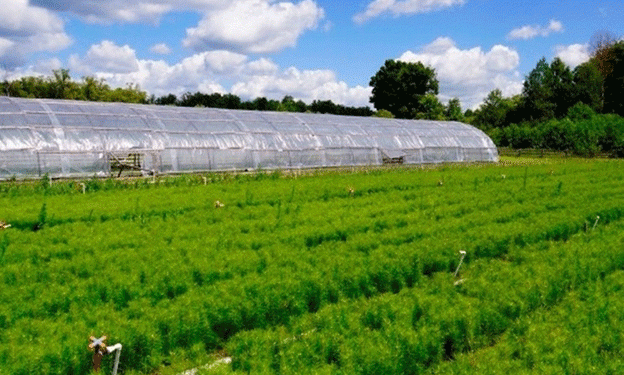In the heart of Russia’s Tambov Region, an ambitious effort to support reforestation and forest preservation has taken a significant leap forward. The Sosnovsky district is now home to a newly opened greenhouse designed for growing pine seedlings. Built on the grounds of the Chelnavsky Forestry Enterprise, this greenhouse is part of the federal “Forest Preservation” project under the national “Ecology” program, reflecting Russia’s growing commitment to environmental sustainability.
Features of the New Pine Seedling Greenhouse
The newly constructed greenhouse spans 0.04 hectares (approximately 400 square meters) and boasts modern irrigation and power systems to ensure optimal conditions for seedling growth. This advanced setup will enable the facility to sow pine seeds in spring, cultivating over 100,000 robust seedlings each year. The careful selection and importation of specialized soil further enhance the greenhouse’s capacity to support healthy plant development.
These efforts are critical because pine trees play an essential role in Russia’s forest ecosystems. Pine forests provide habitat for a wide variety of wildlife, help regulate the climate, and prevent soil erosion. The Chelnavsky Forestry Enterprise now operates with two greenhouses and two nurseries, spanning a combined area of 0.41 hectares. This infrastructure supports the annual production of over one million seedlings and saplings of key forest tree species, including pines.
The “Forest Preservation” Project: A National Priority
The new greenhouse is part of broader national goals set by the “Forest Preservation” project. Launched as a key pillar of the “Ecology” program, this initiative aims to restore degraded forest lands, reduce deforestation, and ensure the long-term health of Russia’s vast forests. As of 2023, reports indicate that these efforts are gaining traction, with reforestation projects covering thousands of hectares across the country.
According to the Russian Ministry of Natural Resources, forest restoration is increasingly vital due to climate change and deforestation pressures. By investing in modern facilities like the one in Sosnovsky, Russia aims to increase the survival rates of seedlings planted for reforestation, ensuring that young trees grow strong and resilient in the face of environmental challenges.
Impacts and Future Outlook
The establishment of advanced greenhouses has far-reaching benefits. Firstly, these facilities reduce the risk of seedling loss due to harsh weather conditions, pests, or disease outbreaks. Secondly, the controlled environment of a greenhouse allows for the production of stronger seedlings that can adapt more successfully when transplanted into the wild. Furthermore, with technological advancements in irrigation and soil management, seedling cultivation becomes more efficient and sustainable.
The Chelnavsky Forestry Enterprise is setting an example for other regions. The hope is that more areas will adopt similar strategies, creating a nationwide network of nurseries and greenhouses to support forest conservation. In turn, this could help Russia maintain its status as one of the world’s most forest-rich nations, providing ecological benefits that extend well beyond its borders.
The inauguration of the new pine seedling greenhouse in Tambov’s Sosnovsky district is a promising development in the fight to preserve and restore Russia’s forests. By leveraging modern technology and thoughtful planning, the Chelnavsky Forestry Enterprise is helping to safeguard the region’s environmental future. As reforestation becomes increasingly urgent worldwide, these efforts underscore the importance of strategic investments in forest conservation infrastructure.










